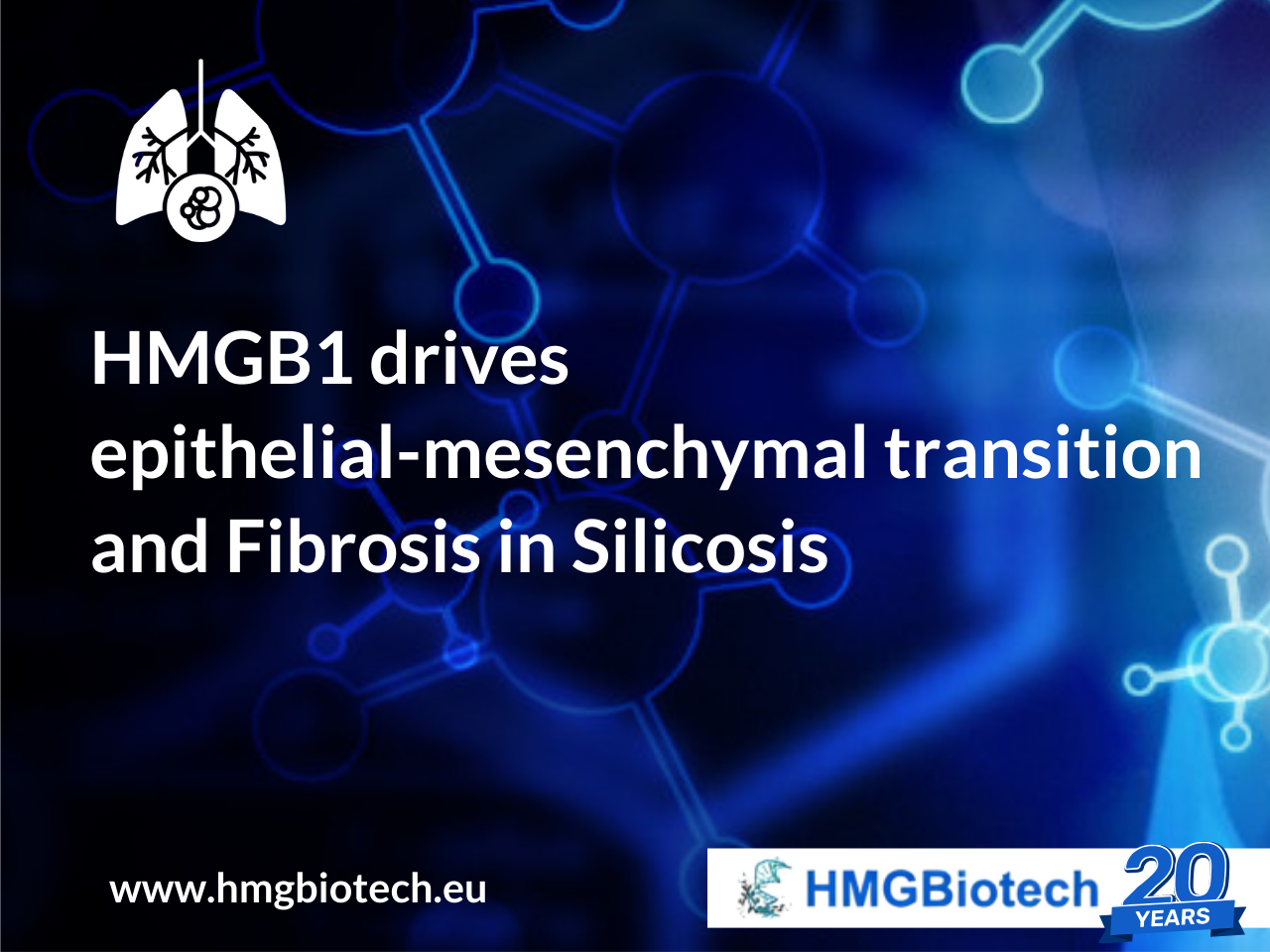Researches on High Mobility Group Box 1 (HMGB1) focus on its mediator role in fibrotic disease, and recent findings shed light on HMGB1 critical role in epithelial-mesenchymal transition (EMT) and pulmonary fibrosis associated with silicosis.
HMGB1 role in Silicosis
HMGB1 protein has been previously implicated in several fibrotic conditions, including idiopathic pulmonary fibrosis and liver fibrosis. Its ability to act as a damage-associated molecular pattern (DAMP) makes it a potent driver of inflammation and cellular transdifferentiation.
- Elevated levels of HMGB1 protein in the serum of silicosis patients and in lung tissues of silicotic mice, indicating systemic and local HMGB1 dysregulation.
- HMGB1 overexpression in alveolar epithelial cells is associated with increased activation of RAGE (Receptor for Advanced Glycation End Products) and β-catenin, a key effector in the Wnt signaling pathway involved in EMT.
HMGB1-RAGE-β-catenin axis in Epithelial mesenchymal transition (EMT)
EMT is a biological process wherein epithelial cells lose their polarity and adhesion properties, transitioning into mesenchymal-like cells with increased motility, central to fibrotic progression.
A study offers strong evidence that HMGB1 promotes EMT and fibrotic progression in silicosis via the RAGE/β-catenin signaling pathway. The identification of this molecular cascade provides a mechanistic link between silica-induced cellular stress and long-term fibrotic remodeling, opening the door to targeted anti-HMGB1 therapies.
The study utilized an EMT model induced in RLE-6TN alveolar epithelial cells using TGF-β1 and conditioned media from silica-stimulated macrophages. Key observations include:
- Treatment with recombinant HMGB1 (rHMGB1) further enhanced EMT features such as loss of E-cadherin, increased vimentin expression, and enhanced migratory behavior.
• These effects were mediated through upregulation of RAGE and β-catenin, confirming the activation of a pathogenic signaling axis.
• Pharmacological inhibition of HMGB1 (using glycyrrhizin) or blockade of RAGE (using FPS-ZM1) effectively suppressed EMT and attenuated β-catenin signaling.
Moreover, RAGE suppression alone significantly reduced HMGB1-induced EMT and cellular migration, underlining its essential role in propagating HMGB1-mediated effects.
Contact us for your pre-sales questions about HMGB1
Read the full article about the study:
https://pubmed.ncbi.nlm.nih.gov/39800143/




